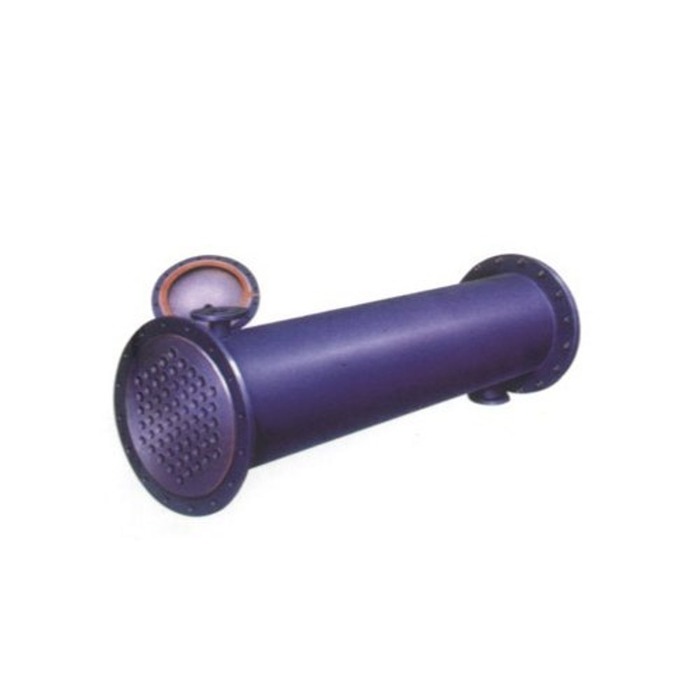Introduction
Carbon Steel Tube Condenser is a specific type of shell and tube heat exchanger used primarily to condense vapor (such as steam) into liquid using carbon steel tubes as the medium for heat transfer. These condensers are commonly used in power plants, petrochemical units, refineries, chemical industries, and HVAC systems where durability, efficiency, and cost-effectiveness are key.
Carbon steel is selected due to its mechanical strength, moderate corrosion resistance, and economic advantage over more expensive alloys. Carbon steel tubes can handle high pressures and temperatures, making them a preferred choice in condensing steam or chemical vapors under industrial operating conditions.
Key Features of Carbon Steel Tube Condensers
Robust Mechanical Strength
Carbon steel has high tensile and compressive strength, allowing it to perform under high-pressure steam or gas environments without deforming or cracking.
Good Thermal Conductivity
Although not as high as copper or aluminum, carbon steel has sufficient heat transfer capability for vapor condensation, especially in industrial-scale systems.
Wide Availability in Seamless and Welded Forms
Carbon steel tubes are manufactured in both seamless and welded versions to accommodate different pressure, size, and budget requirements.
Adaptability to Design
Carbon steel tubes can be bent, welded, machined, or assembled into U-tube bundles, straight tube bundles, or multi-pass configurations, allowing flexibility in condenser design.
Moderate Corrosion Resistance
While not inherently corrosion-proof, carbon steel tubes perform well in closed-loop or chemically stable environments. External coatings, cathodic protection, or inhibitor chemicals can enhance their service life.
Technical Design Parameters
When designing or selecting a carbon steel tube condenser, engineers consider the following:
Tube Dimensions
- Outer Diameter (OD): Typically ranges from 12.7 mm (1/2″) to 50.8 mm (2″).
- Wall Thickness: Selected based on pressure and temperature, per ASME or ASTM standards.
- Length: Can vary from 1 meter to over 6 meters.
Flow Configuration
- Single-pass or multi-pass based on thermal performance needed.
- Counter-flow design for maximum temperature difference between vapor and coolant.
Tube Bundle Arrangement
- Fixed tube sheet, floating head, or U-tube bundle designs depending on ease of cleaning, expansion, and space limitations.
Material Grades
Common grades of carbon steel used:
- ASTM A179 – Low carbon seamless tubes for heat exchangers and condensers
- ASTM A210 – Medium carbon seamless tubes
- ASTM A106 Gr B – High-temperature service
- IS 1239 / IS 3589 – Indian Standards for carbon steel pipes and tubes
Corrosion Protection Options
Because carbon steel is prone to corrosion in certain environments, the following methods can be used:
- Galvanizing: Applying a protective zinc layer
- Epoxy Coating or Painting: Internal/external protective coatings
- Cathodic Protection: Electrochemical technique for marine or underground systems
- Chemical Inhibitors: Used in circulating water or vapor to reduce scaling/corrosion
- Material Selection: Using low-carbon steel in less corrosive systems; coated steel in aggressive systems
Maintenance and Lifecycle
Carbon steel tube condensers are valued for easy maintenance. Tube bundles can be pulled out for mechanical cleaning or high-pressure washing. In case of leakage or fouling, individual tubes can be plugged or replaced without shutting down the entire system. Regular descaling and visual inspection can extend their lifespan to 10–20 years depending on the application and water quality.
Conclusion
Carbon Steel Tube Condenser is a cost-effective, durable, and highly adaptable solution for industries requiring efficient condensation of vapor into liquid. With robust thermal and mechanical properties, carbon steel tubes deliver reliable performance in high-pressure steam systems, chemical plants, power generation units, and HVAC setups.
While not as corrosion-resistant as stainless steel or titanium, carbon steel offers exceptional value when used in controlled or closed systems, or when paired with appropriate coatings or treatments. With proper design and maintenance, carbon steel tube condensers can provide long-lasting, efficient operation in even the most demanding environments.

